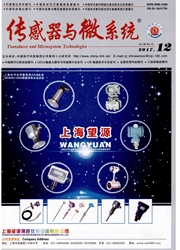

 中文摘要:
中文摘要:
肺裂将肺分成5个不同的独立区间,称为肺叶。准确的肺裂检测对肺部病灶定位以及肺部功能分析极其重要。文章在已经提出的窄条微分(DOS)滤波器的基础上,针对CT图像中由于肺裂灰度值分布不均而导致分割失败的情况,提出一种基于Dijkstra最短路径算法的自动肺裂分割方法。首先对肺裂进行增强并创建带权有向图,其次迭代选取属于肺裂的像素点作为源点,求取其到其他结点的最短路径。该算法可以在无人工干预的情况下,有效地跟踪检测肺裂并保持肺裂的厚度和完整性。通过对肺部临床数据实验结果的分析,证明该方法对肺裂检测准确有效。
 英文摘要:
英文摘要:
Pulmonary fissures divide human lungs into five distinct anatomic compartments called the lobes.The accurate identification of the fissures is considerably important for the location of pulmonary lesions and the precise analysis of lung function. However, failures always happen in fissure segmentation due to the uneven distribution of grey value. This paper developed an automatic segmentation of pulmonary fissure based on the DoS filter which had been proposed. First, we enhanced the fissure and constructed a weighted lattice graph, then we found the pixels belonging to the lung fissures as the starting points iteratively. Using dijkstra's algorithm, a minimum cost path between a single source vertex and every other vertex in the graph was found. This method requires no manual intervention, and follows fissure efficiently and preserves fissure thickness. It is verified in experiments with clinical database that the technique proposed is exact and efficient for lung fissure detection.
 同期刊论文项目
同期刊论文项目
 同项目期刊论文
同项目期刊论文
 期刊信息
期刊信息
